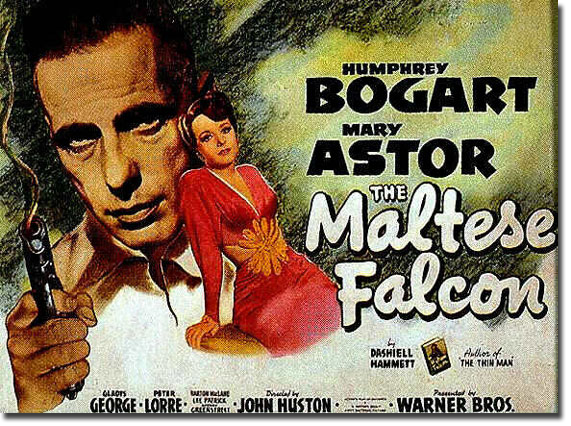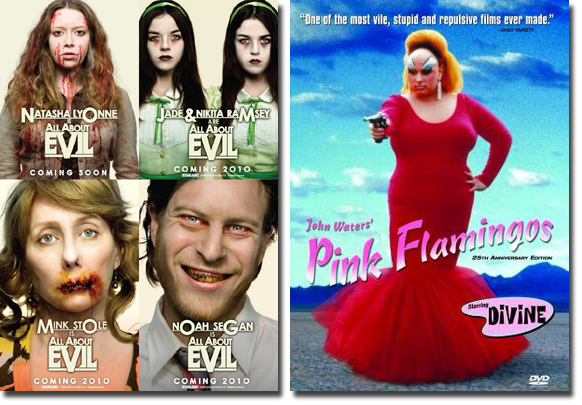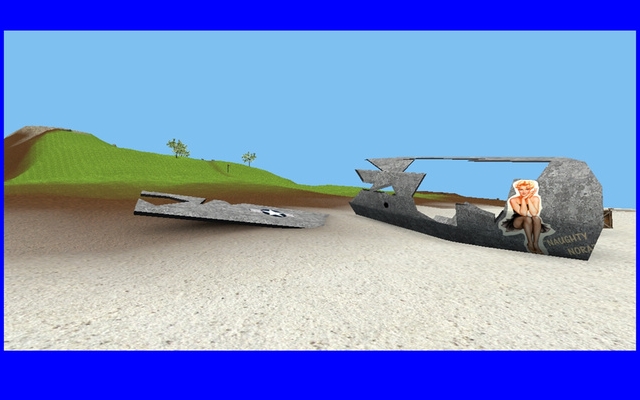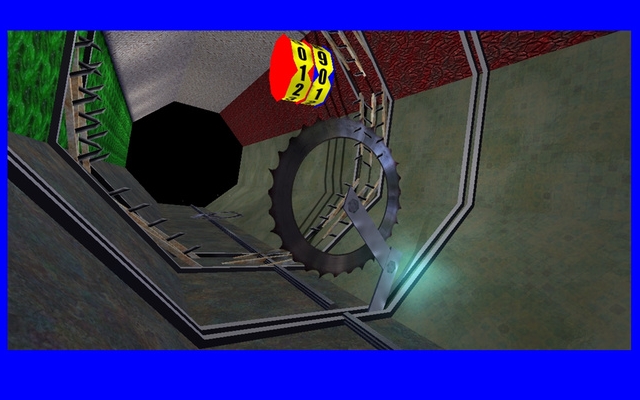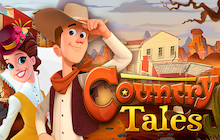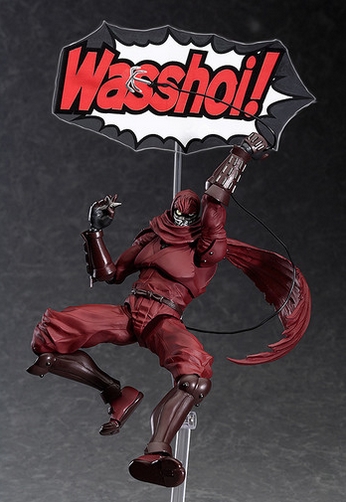- Noir: A genre of crime
literature featuring tough, cynical characters and bleak settings. Often fatalistic and featuring a dangerous
femme fatale.
- Camp: Something that provides
sophisticated, knowing amusement, as by virtue of its being artlessly stylized, self-consciously artificial and
extravagant, or teasingly ingenuous and sentimental.
- B-Movie: Yesterday -
identified as film intended for distribution as the less-publicized, bottom half of a double feature. Today
- displays a high degree of craft and aesthetic ingenuity OR the primary focus is prurient and exploitive.
Maybe both...

Film Noir
Film Noir, or Noir, is often described by individuals in the same way they
explain pornography: "I can't really define it specifically, but I know it when I see it."
Film Noir is not a genre or sub-genre of films; it typifies the tone or mood of the movie. The term "Film Noir"
first began circulating among film critics in France as a way to describe many of the movies produced by Hollywood
during and directly after World War II as we entered the Cold War period. The general theme we think of as noir
emerged & evolved in California thanks to several German filmmakers who immigrated to the United States and
brought with them their German Expressionist sensibilities. It is important to note that Hollywood filmmakers at
the time were not intentionally out to create an entire class of films; Their "Film Noir" movies were labeled as
such much later in time, after the Classic period of cinema.
These movies were bleak, dark and smoky with an undercurrent of pessimism and paranoia intertwined with the
theme. Shot in black & white with an emphasis on heavy shadows and darkness, these movies left no mistake in
the viewer's mind that they were about to embark on a very sinister and malevolent journey. They featured a cynical
and disillusioned anti-hero pitted against a femme fatale: A sexy, mysterious, cunning and ruthless woman.
Although hardened and street-wise, the anti-hero would find himself vulnerable when faced with the charm and
allure of the femme fatale. They were two sides of the same coin and this twisted relationship formed the catalyst
for dark events yet to transpire within the story.
The characters intrigue us because they represent the outcasts who live in that lonely, forsaken underworld
on the fringes of society. Gangsters, morally corrupt private eyes, criminals and low-lifes: These are the
characters who both repel and attract us. They are that little dark corner of the soul we all carry within us
and struggle desperately to hide from the world. And here were these people on the silver screen flaunting their
imperfections, giving the finger to convention & social mores and committing acts of depravity as easily as
ordering a cup of joe at your neighborhood diner.
when we speak of camp we are referring to movies that have a certain self-aware charming banality
and artificiality so extreme that the true elegance and finesse of the film is immediately revealed to the
knowledgeable viewer."
Another distinct feature of film noir is the witty dialogue which is short, snappy and machine-gunned back
and forth between characters: An intellectual jousting match or, in many cases, a form of courtship as the femme
fatale shows her mettle and quickly earns the respect of the anti-hero. These movies would often begin with a
voice-over by the male lead, the narration continuing throughout the picture, both informing and entertaining
us as we explored the thoughts & dark recesses of his psyche. The most well-know actors who played the role
of the anti-hero are Humphrey Bogart (The Maltese Falcon
, 1941), Fred MacMurray
(Double Indemnity, 1944) and
Robert Mitchum (Out of the Past,
1947). When we think of femme fatales Veronica
Lake (The Blue Dahlia), Barbara
Stanwyck (Double Indemnity) and Mary
Astor (The Maltese Falcon) pop to the forefront of our mind.
Several "Modern Noir" films have been released in recent years, most notable
Frank Miller's Sin City
(2005, starring Clive
Owen, Mickey Rourke & Bruce
Willis), James Siegel's Derailed
(2005, starring Clive Owen, Jennifer
Aniston & Vincent Cassel) and Rian
Johnson's Brick (2005, starring
Joseph Gordon-Levitt, Lukas Haas &
Emilie de Ravin). These movies share many of the same characteristics of their
famous predecessors: Marked fatalism, whip-snap dialogue and convoluted, twisting & non-linear
story-lines that grip you until the very last minute.
~ RJ Wattenhofer

Camp Films
The term "Camp" was first used in 1909
to describe flamboyant and exaggerated theatrical productions that were so conspicuously over-the-top in regard
to acting & story-line as to be appealing to a sophisiticated audience. The definition has fluctuated over
the years as camp films have come into their own but, generally speaking, when we speak of camp we are
referring to movies that have a certain self-aware charming banality and artificiality so extreme that the
true elegance and finesse of the film is immediately revealed to the knowledgeable viewer.
Camp films emerged in the 1960's and their popularity has not diminished in the least. Camp comprises an
aesthetic and is not a film genre in and of itself. If you are familiar with the works of
John Waters (Hairspray,
2007 & Pink Flamingos,
1972) then you will understand the tone and sensibilities of this class of
film.
The basis of Camp is its ironic analysis and revelations of the societal norms & mores in which it finds
itself and subsequently then derives the foundation & backdrop for its stories. The underlying theme of Camp
Films flaunts lunacy in the face of convention, throwing the hypocricy of the modern age back in the face of the
viewer and tells them "Hey, society is stupid, but we're all in this together!" Camp is deep introspection from
an insider's point-of-view, a courageous confrontation of the consumerist, self-indulgent and selfish attitudes
that exists in all of us.
Drag plays a large role in Camp productions, making a very visual statement to the audience that what they
are viewing is definitely outside the confines of the status quo. Devine (Harris Glen
Milstead) is a name that most cinephiles would recognize from several John Waters movies. Another modern
actor is San Francisco's Peaches Christ (Joshua Andrew Grannell) who plays a role
in one of my favorite camp horror movies All About Evil
(2010).
It is also interesting to note that the 1953 Movie
Beat the Devil was a deliberate tongue-in-cheek camp style spoof of the
Maltese Falcon, featuring the self-same star of the film, Humphrey Bogart.
As Camp has become more ingrained in popular culture, there has been a watering down of the aspects of this
mode of performance by some Hollywood studios to take advantage of current trends without truly understanding
the aesthetic they try to emulate (what else is new?). I would say the best modern example of an extraordinary
film that contains many of the attributes of camp is 2001's
Donnie Darko. Darkness and silliness are juxtaposed perfectly in a complex
story that certainly makes this one of my top ten movies. And, as I mentioned earlier, All About Evil is a
modern standout with a very low-budget campiness that I find extremely appealing.
~ RJ Wattenhofer
B-Movies
Thanks to Eden, Prairie, Minnesota's very own
Mystery Science Theater 3000, everyone not living under a rock is very familiar with the
B-Movie. The beauty and appeal of classic B-Movies from the 1960's & 1970's
relied on the fact that they were naively unaware of their own future B-Movie status. Their innocence allowed us
the latitude to openly mock, and dearly love, these inept attempts at cinematic excellence.
The original usage of the term B-Movie meant quite literally a B Movie: A second movie, used as a time-filler
after the "better" and well-publicized main attraction was done playing. The definition has evolved over the years,
but typically we think of B-movies as inexpensive, tasteless and often times exploitive. Conversely, B-Movies can
also maintain a superior level of artistic integrity and sophistication masked by their ever apparent lack of
proper financing. The B-Movie director must be innovative and clever in order to capture a scene that he/she
envisions but can't afford to construct via conventional methods (it always comes down to the dollars).
It is difficult to classify B-Movies as a genre onto themselves; All B-Movies fall into a primary genre whether
it be western, science fiction, thriller, etc. Probably the best way to classify them is as a sub-genre that
encompasses all movies sharing the B-Movie set of attributes.
There are modern B-Movie films; however, these movies are very self-aware of their intended status &
market and do not truly fall into the same category as films of the past. It is impossible to capture the nuances
of former B-Movies, as once you are self-aware there is no going back. The Emperor's New Clothes have been revealed
and innocence is lost, friend.
That is not to say that modern B-Movies do not have an appeal all their own. They do share many of the same
characteristics of their past counterparts. The works of Quentin Tarantino are
extremely hyper-aware of their own B-Movie qualities and throw it in the face of the viewer, the most obvious
being his 2007 double feature release Grindhouse
(Death Proof & Planet Terror). Tarantino borrows
heavily from past influences and makes no effort to hide the fact that he is intentionally creating a
B-Movie-esque movie from the ground up. Contrary to the philosphy of 1970's B-Movies, his hyper-awareness
works for him and consequently the movies he produces have created a whole new sub-genre, the formula &
style emulated by many writers, directors & producers since the mid 1990's.
There are several actors who received popular status in society based soley on their B-Movie work. The most
famous and reknowned of all is
Bruce Campbell of The Evil Dead trilogy. He has been in many movies and
TV series over the span of his career, however he will always be remembered for his role as Ashley 'Ash' J.
Williams. Currently, you will find him working on the USA Network's television series Burn
Notice.
There has been a decline in the production of B-Movies since the early 1980's. Audience expectations as well
as ticket prices have risen, and producing a Hollywood "low-budget" feature can now cost millions of dollars.
Attitudes changed, society changed and a growing sophistication in modern movie-goers rang the death knell for
the B-movie.
Fortunately, many of these classic B-Movies from the 1960's and 1970's have been preserved and there has been
a new-found cult following of these gems from the past. If you are not familiar with this sub-genre, I highly
encourage you to check it out. This is an important and dynamic part of film history that every cinephile should
add to their list of guilty indulgences.
~ RJ Wattenhofer


